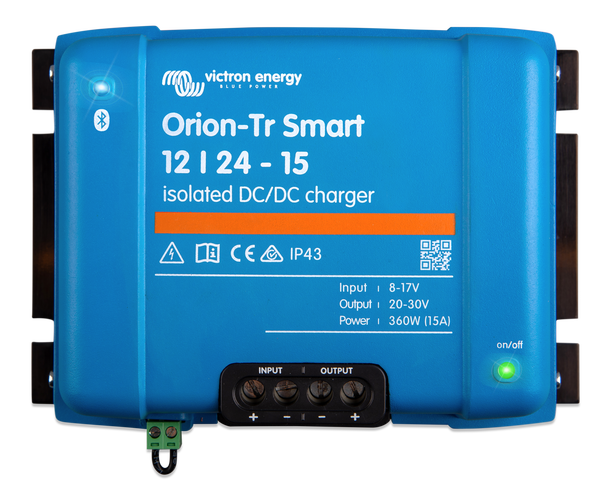Every year, new boats are built with more and more electrical equipment, systems and gadgets. On small to mid-sized boats without generators onboard, these electrical demands can be taxing on the batteries and DC electrical system. Most boats over 35-feet that are built today come standard with electric bow thrusters, electric windlasses, DC inverters and underwater and interior lighting, just to name a few. You’ll also commonly find electric stern thrusters, electrically retracting sunroofs, sliding doors or windows, and electric cranes and winches. All of these systems add up to put quite a strain on the batteries and cables that deliver DC power, and at 12VDC, many require several hundred amps.
Electric-powered motors, like bow thrusters and windlasses, that have high power-draws are also often located quite far from the boat’s central battery bank. Because of the high power demand and long distance, these types of systems require very thick power cables to deliver enough energy to the thruster or windlass motor without suffering more than a 10% loss. The thicker the power cable, the harder it is to install and run throughout the boat, especially for an aftermarket install. Additionally, the thicker cables tend to be very costly.
Due to the power demand and length of cable run required for systems like thrusters and windlasses, many installers and boat builders have started using dual-voltage power systems on board by installing a 24-volt battery bank in the bow. Doubling the voltage cuts the amp-draw in half, given the equation Watts = Volts x Amps, so the size and cost of cabling is reduced, as well as the strain on the boat’s batteries. But how does a boat with a 12-volt power system incorporate a 24-volt battery bank? Well, that’s where Victron Energy DC-to-DC converters and chargers offer a solution.

Victron Energy offers a wide range of DC-to-DC converters. DC-to-DC converters are typically used as “power supplies” to deliver a constant, steady output voltage from a nominal input voltage range that can fluctuate, sometimes significantly. For example, a 12-volt system can see voltages ranging from 10.5VDC if it the battery is deeply discharged, to 14 or 15VDC during charging cycles depending on the battery chemistry in use and battery charger configuration. This fluctuating range can cause problems in some cases for sensitive equipment. A Victron 12V to 12V DC to DC converter can accept an input voltage range of 10-17VDC yet will deliver a constant 12.2VDC output which will happily supply sensitive 12V equipment.
Going a step further, there are DC to DC converters that can, as described above, step a fluctuating nominal input voltage up or down while at the same time delivering a constant output voltage. Examples would be 12V to 24V or 24V to 12V DC to DC converters.
Victron offers several specialty DC to DC converters which can be used as power supplies as described above, or when configured via Smart software, as multistage battery chargers. This creates interesting possibilities for vehicles or vessels that may need to charge one battery bank from another battery bank. For example, a house bank may need to be charged from a starter bank, a starter bank from a house bank, or a thruster bank from a house bank. These DC to DC chargers are available as 12V to 12V, 24V to 24V, 12V to 24V and 24V to 12V.
DC to DC converters, and similarly DC to DC chargers, are relatively low power devices. Victron Orion-Tr models range from 250-400 watts of output power. This means they are best suited for low current applications like electronics, LED lighting, etc. However, DC to DC chargers can be used charge a battery bank for high power devices making them useful as a go between for equipment such as bow thrusters or windlasses that they cannot run directly as a power supply.
Let’s examine for example a mid-size vessel that is a 12V vessel that wants to add a DC bow thruster, but due to the size of the vessel, the thruster required is only available as 24V. In this case a 24V battery bank sized per the requirements of the thruster could be added to the vessel near the thruster. Typically, this would consist of two 12V batteries wired in series to achieve 24VDC. The thruster is then wired to run off the 24V bank as specified by its manufacturer. The inevitable question then is: how do we charge this new 24V thruster battery bank on this vessel that is setup for 12V? One solution to answer this question is with a DC to DC charger and in this scenario a 12V to 24V model. DC to DC chargers like any other battery charger are available in various sizes but the criteria for selecting the best charger differ from the criteria used to select the most appropriate battery bank for the thruster. However, with the technical details of the 24V battery bank known including battery chemistry, capacity, and charge acceptance rate (typically available from battery manufacturer data sheets) Imtra can calculate battery charging requirements and recommend the most appropriate DC to DC charger for the installation.